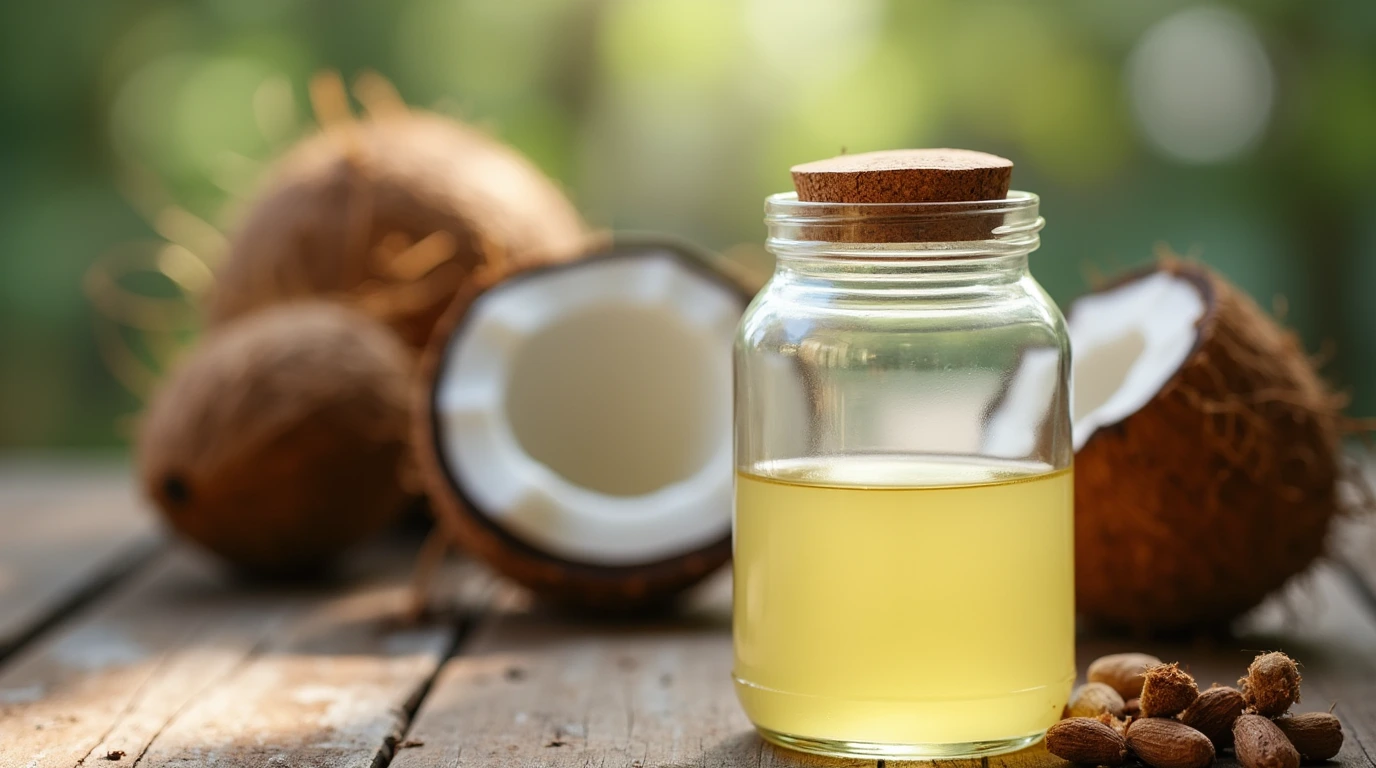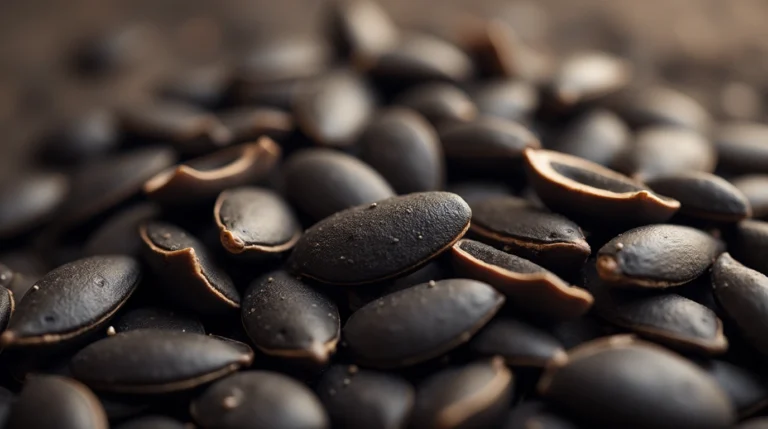Have you ever wondered if your favorite kitchen staple or skincare essential loses its effectiveness over time? Freshness matters, especially when it comes to a versatile product like coconut oil. Whether you use it for cooking or as part of your beauty routine, ensuring it hasn’t gone bad is crucial for the best results.

Not all coconut oil is the same. Refined and virgin types have different shelf lives, and factors like exposure to air, light, and heat can speed up expiration. Always check the date on the product label to ensure you’re using it at its peak quality.
In this article, you’ll learn how to spot signs of spoilage, proper storage tips, and why keeping your coconut oil fresh is essential for both your kitchen and skincare routine.
Key Takeaways
- Freshness is vital for both cooking and skincare uses.
- Refined and virgin types have different shelf lives.
- Air, light, and heat can accelerate expiration.
- Always check the date on the product label.
- Learn how to spot signs of spoilage in this article.
Understanding Coconut Oil Shelf Life
Understanding the shelf life of your kitchen essentials ensures they remain fresh and effective. For a versatile product like coconut oil, knowing how long it lasts is crucial for both cooking and skincare. The shelf life depends on factors like processing methods and storage conditions.
Difference Between Refined and Virgin Coconut Oil
Not all coconut oil is created equal. Refined coconut oil undergoes processing to remove impurities, which can shorten its shelf life. On the other hand, virgin coconut oil is less processed, retaining more natural properties and lasting longer. This difference in processing directly impacts how long each type remains fresh.
Shelf Life Estimates and Expiration Dates
Typically, refined coconut oil lasts between 18 to 36 months, while virgin coconut oil can remain effective for three to five years. Always check the date on the product label to ensure you’re using it within its optimal period. Proper storage, away from heat and light, is essential to maintain its quality.
| Type | Shelf Life | Key Factors |
|---|---|---|
| Refined Coconut Oil | 18-36 months | Processing removes impurities, reducing longevity. |
| Virgin Coconut Oil | 3-5 years | Less processed, retains natural properties. |
To maximize freshness, store your coconut oil in a cool, dark place. Tracking the date on the label helps you avoid using expired products. By understanding these details, you can ensure your coconut oil stays fresh and effective for longer.
Can Coconut Oil Go Bad? Signs and Factors
Environmental factors play a big role in the longevity of your products. Even the most versatile kitchen staples can lose their freshness over time. Understanding the signs of spoilage and the factors that contribute to it helps you maintain quality.
Environmental Exposure: Heat, Air, and Light
Prolonged exposure to heat, air, and light can degrade your product. Heat accelerates oxidation, leading to the formation of free radicals. These unstable molecules break down the structure, reducing its effectiveness.
Air and light also contribute to spoilage. When left unsealed, exposure to air causes oxidation. Light, especially sunlight, speeds up this process. Even small fluctuations in temperature can shorten its life.
Processing Methods and Contamination Risks
How a product is processed affects its shelf life. Contamination during manufacturing or improper handling can introduce bacteria or mold. This accelerates spoilage, making it unsafe for use.
Look for changes in texture, consistency, or smell. A rancid odor or off texture is a clear sign it has gone bad. Always store your product in a cool, dark place to minimize these risks.
Optimizing Storage for Maximum Freshness
Proper storage is the key to maintaining the quality of your kitchen essentials. Whether you use it daily or occasionally, how you store your product directly affects its freshness and effectiveness. By following a few simple steps, you can ensure it stays in top condition for longer.
Room Temperature vs. Refrigeration
Storing your product at room temperature is ideal for most climates. It remains in a liquid or semi-solid state, making it easy to use. However, in extremely hot conditions, refrigeration can help preserve its quality. Keep in mind that refrigeration solidifies the product, so you may need to warm it slightly before use.
Effective Sealing and Labeling Techniques
Minimizing air exposure is crucial for maintaining freshness. Always use an airtight container to prevent oxidation. Labeling your container with the purchase or opening date helps you track its shelf life. This simple step ensures you use it before it loses its effectiveness.
| Storage Method | Pros | Cons |
|---|---|---|
| Room Temperature | Easy to use, maintains consistency | May degrade in extreme heat |
| Refrigeration | Extends shelf life in hot climates | Solidifies, requires warming |
By following these tips, you can keep your product fresh and ready for use. Proper storage not only extends its shelf life but also ensures it remains effective for all your needs.
Environmental Conditions That Affect Freshness
The freshness of your kitchen essentials can be influenced by the environment around you. Factors like regional climate, humidity, and temperature fluctuations play a significant role in how long your products remain effective. Understanding these conditions helps you store your items properly and extend their shelf life.

Impact of Regional Climate and Temperature Fluctuations
Different climates can affect the longevity of your kitchen staples. In hot and humid regions, higher temperature levels can accelerate spoilage. Conversely, cold climates may cause products to solidify, making them harder to use. Stability in temperature is key to maintaining quality.
Assess your local climate when storing your items. For example, if you live in a tropical area, consider using a cool, dark space to minimize exposure to heat. Periodic checks every month can help ensure your products remain fresh and safe to use.
Minimizing Oxidation and Moisture Exposure
Oxidation and moisture are two major threats to freshness. When products are exposed to air, they undergo oxidation, which can degrade their quality. Moisture, on the other hand, can lead to mold or bacterial growth, making them unsafe.
To reduce these risks, store your items in airtight containers. Keep them in a dry, cool space away from direct sunlight. Proper sealing and labeling can also help you track their shelf life and ensure they’re used before they spoil.
How to Identify Coconut Oil That Has Gone Bad
Spotting the signs of spoilage in your kitchen essentials ensures you always use fresh and safe products. Over time, exposure to air, light, or heat can degrade its quality. Knowing what to look for helps you avoid using a product that has gone bad.
Visual Indicators: Color and Texture Changes
One of the first signs of spoilage is a change in color. Fresh product typically has a pure white or clear appearance. If you notice a shift to yellow, tan, or even green, it’s a clear sign of degradation. Mold growth can also cause unusual discoloration.
Texture changes are another visual clue. Fresh product has a smooth, consistent form. If it becomes chunky, gritty, or separates into layers, it’s likely no longer safe to use. These changes indicate oxidation or contamination.
Sensory Clues: Smell and Taste Variations
Your sense of smell is a powerful tool for identifying spoilage. Fresh product has a mild, sweet, and nutty aroma. If you detect a sour, musty, or rancid smell, it’s a strong indicator it has gone bad.
Taste is another reliable method. Fresh product has a pleasant, slightly sweet flavor. If it tastes bitter, sour, or off, it’s time to discard it. Always trust your senses when evaluating its quality.
| Indicator | Fresh Product | Spoiled Product |
|---|---|---|
| Color | Pure white or clear | Yellow, tan, or green |
| Texture | Smooth and consistent | Chunky, gritty, or separated |
| Smell | Mild, sweet, nutty | Sour, musty, rancid |
| Taste | Sweet and pleasant | Bitter or sour |
Regularly checking these signs ensures you always use fresh and safe products. By paying attention to color, texture, smell, and taste, you can confidently determine if it’s still good to use.
Best Practices for Storing Coconut Oil at Home
Keeping your kitchen essentials fresh starts with proper storage techniques. For a versatile product like coconut oil, the right approach ensures it stays in top condition for cooking and skincare. Here’s how to store it effectively at home.

Choosing the Right Container
The container you use plays a big role in maintaining freshness. Opt for airtight jars or bottles to minimize exposure to air. Glass or BPA-free plastic containers are ideal because they don’t react with the product. Avoid using metal containers, as they can affect the quality over time.
Establishing a Labeling System
A clear labeling system helps you track freshness. Include details like the type of oil, date of first use, and best-by date on the container. This simple step ensures you use the product before it loses its effectiveness. Place labels in a visible spot for easy reference.
Maintaining cleanliness is equally important. Always use clean utensils to avoid cross-contamination. Periodically review your stored items, moving older products to the front for quicker use. These small habits go a long way in preserving quality.
- Use airtight jars or bottles for storage.
- Label containers with type, date of first use, and best-by date.
- Keep utensils clean to prevent contamination.
- Review stored items regularly to ensure freshness.
By following these best practices, you can keep your coconut oil fresh and ready for use. Proper storage not only extends its shelf life but also ensures it remains effective for all your needs.
Using Coconut Oil in Cooking and Skincare
Discover how this versatile product transforms both your kitchen and skincare routine. Whether you’re whipping up a delicious meal or pampering your skin, it’s a must-have for every home. Its natural properties make it a favorite for both cooking and beauty applications.
Culinary Uses and Recipe Inspirations
In the kitchen, this product shines as a healthy alternative to traditional fats. Use it for sautéing vegetables, frying eggs, or baking your favorite dessert. Its subtle sweetness enhances flavors, making it perfect for granola bars, smoothies, or even popcorn.
For a quick recipe idea, try replacing butter with this product in your pancake batter. It adds a rich, nutty flavor that pairs well with maple syrup and fresh fruit. Experimenting with it in your cooking routine can lead to delicious discoveries.
Beauty Benefits and Moisturizing Applications
Beyond the kitchen, this product works wonders for your skin. It’s a natural moisturizer that hydrates and nourishes your body. Apply it directly to dry areas like elbows and knees for instant relief. Its lightweight texture absorbs quickly, leaving your skin soft and smooth.
For a DIY cream, mix it with essential oils for a personalized skincare treatment. Refined coconut oil is often preferred for beauty routines due to its neutral scent and lighter consistency. It’s a versatile addition to your daily regimen.
When selecting this product, consider its intended use. For cooking, virgin types offer a richer flavor, while refined coconut oil is ideal for skincare. Embrace its versatility and explore new ways to incorporate it into your life.
Conclusion
Ensuring the freshness of your kitchen and skincare essentials requires attention to detail. Proper storage and awareness of spoilage signs are key to maximizing shelf life. Always track the date on the label and store your product in a cool, dark space.
Check for sensory indicators like flavor and color before use. A rancid smell or off texture means it’s time to replace it. Use airtight containers to minimize exposure to air and light, which can degrade quality over time.
Whether you use it for cooking or skincare, choosing the right type and storage method ensures it remains effective. Regularly review your product to maintain its freshness and enjoy its benefits at home.
FAQ
What is the difference between refined and virgin coconut oil?
Refined coconut oil is processed and has a neutral flavor, while virgin coconut oil is unrefined, retaining its natural aroma and taste. The processing method affects shelf life and uses.
How long does coconut oil last before expiring?
Unopened jars can last up to two years, while opened containers typically remain fresh for about six months to a year, depending on storage conditions.
What environmental factors can spoil coconut oil?
Exposure to heat, air, and light can accelerate spoilage. Oxidation and moisture are the main culprits that degrade its quality over time.
Should I store coconut oil in the fridge or at room temperature?
Room temperature is ideal for maintaining its texture and usability. Refrigeration can make it too hard and is unnecessary unless you live in a very hot climate.
How can I tell if my coconut oil has gone bad?
Look for changes in color, texture, or smell. A rancid odor, mold, or an off taste are clear signs it’s no longer safe to use.
What’s the best way to store coconut oil at home?
Use an airtight container and keep it in a cool, dark place. Labeling the jar with the purchase date helps track its freshness.
Can I use coconut oil for both cooking and skincare?
Yes, it’s versatile. Use it as a cooking fat for baking or frying, or apply it as a moisturizer for skin and hair due to its nourishing properties.
Does regional climate affect coconut oil storage?
Yes, hot and humid climates can shorten its shelf life. In such areas, consider storing it in a cooler spot to prevent spoilage.
What are the signs of oxidation in coconut oil?
A yellowish tint, a grainy texture, or a sour smell indicates oxidation. These changes mean the product has lost its freshness.
Can I use expired coconut oil for anything?
Expired oil isn’t safe for consumption or skincare. However, it can be repurposed for non-edible uses like polishing wood or removing sticky residue.








One Comment
Comments are closed.